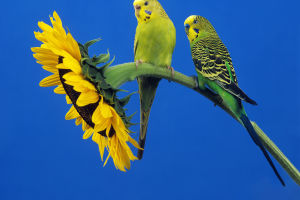The world is full of breathtaking creatures, and among them, the red-crowned crane stands out as a true embodiment of beauty and magnificence. With its striking appearance and graceful movements, this iconic bird has captivated the hearts of many.
Appearance and Physical Features:
The red-crowned crane, scientifically known as Grus japonensis, is a large and elegant bird that can reach heights of up to 5 feet (1.5 meters). Its most distinctive feature is the vivid red patch on its crown, which contrasts beautifully with its snowy white plumage.
The black feathers on its wings and tail further enhance its regal appearance. With a wingspan of approximately 8 feet (2.4 meters), the red-crowned crane truly commands attention wherever it goes.
Habitat and Distribution:
This magnificent bird is native to the eastern regions of Asia, particularly found in China, Japan, Korea, and so on. It is known to inhabit a range of habitats, including wetlands, marshes, and meadows near rivers, lakes, and coastal areas.
The red-crowned crane prefers areas with tall grasses or reeds, providing it with ample opportunities to forage for food and build nests.
Behavior and Lifestyle:
Red-crowned cranes are monogamous birds, forming lifelong pair bonds. These pairs engage in a beautiful dance-like courtship display, leaping and bowing gracefully to one another, showcasing their commitment and affection.
They communicate through various vocalizations, including bugle-like calls and trumpets, which can be heard from a considerable distance.
Feeding Habits:
The red-crowned crane primarily feeds on plant matter such as seeds, grasses, tubers, and insects. Its long, slender beak allows it to probe the soil for food, while its sharp claws enable it to catch small prey.
During the breeding season, the crane's diet expands to include frogs, fish, and small mammals. Their foraging style is patient and deliberate, as they meticulously search for sustenance in their natural surroundings.
Conservation Status and Cultural Significance:
The red-crowned crane holds significant cultural value in the countries it inhabits. In Japan, it is considered a symbol of luck, longevity, and fidelity. These magnificent birds have been depicted in ancient artworks and are a common motif in traditional Japanese ceremonies and festivals.
Despite its cultural importance, the red-crowned crane faces threats due to habitat loss, pollution, and illegal hunting. As a result, it is listed as endangered on the IUCN Red List.
Conservation Efforts:
To protect and preserve the red-crowned crane, various conservation initiatives have been implemented. Conservation organizations collaborate with local communities to raise awareness about the importance of protecting their habitats and reducing human interference.
Wetland restoration projects, captive breeding programs, and legal protection measures have been established to ensure the survival and recovery of this majestic species.
The red-crowned crane's allure lies not only in its exquisite appearance but also in the symbolism it carries and the profound impact it has on cultural heritage.
As we strive to safeguard the natural world and the creatures that inhabit it, it is crucial to recognize the significance of magnificent species like the red-crowned crane.
By joining forces in conservation efforts, we can ensure that this iconic bird continues to grace our planet, inspiring awe and reminding us of the delicate balance of nature.


